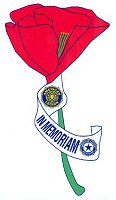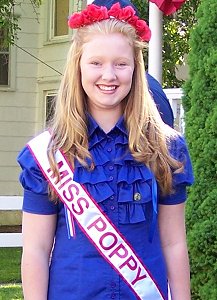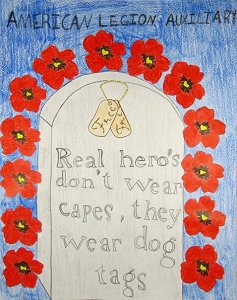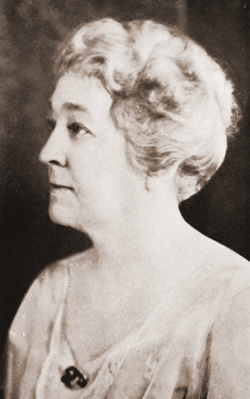 |
|
The Poppy Program
The Poppy Program has been a cornerstone of the American Legion Auxiliary for close to a century and has continually evolved since its inception. Each year, American Legion Auxiliary volunteers distribute millions of poppies, most handmade, in exchange for contributions to assist active-duty military, veterans, and their families. Many of these veterans are in VA Medical Centers, and in some cases, the therapeutic benefits derived are most helpful to them. See the Fundraisers page to read more about our crepe paper poppy distribution.. Auxiliary members promote the memorial poppy flower in other ways as well, such as having a Miss Poppy, as seen in the past, in the Village of Oxford's Memorial Day parade, and having a Poppy Poster Contest. Some poppies are used in craft projects too such as corsages. Fort Hill American Legion Auxiliary member, Terrill Sutton (Oxford, NY), is the Unit 376 Poppy Program Chairman. She was eligible for ALA membership through her late mother, Emily E. Brashaw, a 20-year US Navy firefighter. As Poppy Chairman, Terrill is in charge of distributing the red crepe paper Memorial Poppies for donations, choosing a Poppy Princess for the Memorial Day parade, and organizing the annual Unit 376 Poppy Poster Contest - with assistance by the Oxford Academy Art Department. Unit 376 sponsored it's first Poppy Poster Contest in May 2018. Unit 376 Miss Poppy: Participant must be between six and eighteen years of age, be a Junior member in good standing in the ALA unit, and promote the poppy. Selection of Miss Poppy is at the discretion of the Unit. There is no specific dress code for Miss Poppy. The unit will provide a poppy garland and sash to wear during public events such as in the Memorial Day parade. (To see our past Miss Poppys, visit the Miss Poppy page.) The Poppy Program Guide (PDF) offers answers to questions about the poppy program and its intricacies. HISTORY Shortly after "In Flanders Fields" was written, an American professor and humanitarian from Georgia, by the
name of Moina Belle Michael (August 15, 1869 – May 10, 1944) read the famous poem published in a Ladies’ Home Journal while attending the annual YMCA Overseas Conference. Moina was struck by the last stanza.
On the back of an envelope, Moina quickly penned her response to
McCrae’s verse, with her own poem titled, "We Shall Keep the Faith". The
last stanza captures her idea to wear a poppy in honor of the war dead: After jotting down her poem, Moina excitedly declared, “I shall buy red poppies... I shall always wear red poppies — poppies of Flanders Fields!” She showed her "We Shall Keep the Faith" poem to gentlemen at the conference and
shared her idea with them. The gentlemen were so excited about the idea
that they gave her $10 (a lot of money back then!) and asked for poppies to
wear. Moina rushed out to the Wanamaker’s department store that sold silk
poppies and bought 25 to distribute to conference attendees. |



 Poppy Poster Contest: Promoting public awareness, poppy history and the purpose of the Poppy is part of this program. Contacting schools to enter the contest and displaying Poppy posters enhances public awareness. (To see our Poppy Poster winners, visit our
Poppy Poster Contest: Promoting public awareness, poppy history and the purpose of the Poppy is part of this program. Contacting schools to enter the contest and displaying Poppy posters enhances public awareness. (To see our Poppy Poster winners, visit our 